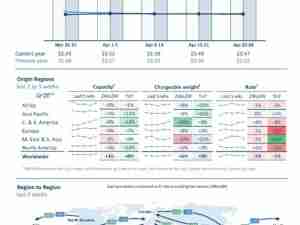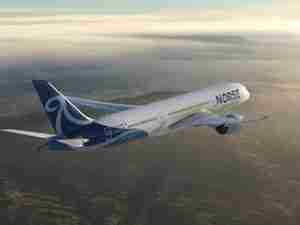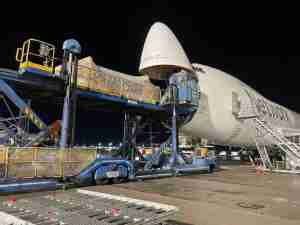Boeing Co.’s 787 Dreamliner suffered a new blow as U.S. regulators on Tuesday said they would step up inspections of each jet before delivery.
The Federal Aviation Administration said in an emailed statement that it is taking the action to “allow the agency to confirm the effectiveness of measures Boeing has undertaken to improve the 787 manufacturing process.”
Since 2020, the company has grappled with structural glitches that have turned its popular wide-body jet into a drain on cash. More than 110 of the carbon-fiber aircraft have been built but left undelivered while the issues are resolved.
The FAA is imposing the same authority it invoked earlier on the 737 Max by insisting that its own safety inspectors conduct reviews of each jet before they can be sold to customers, indicating the agency lacks confidence in Boeing’s manufacturing processes.
The action is the latest highlighting tensions between the aircraft manufacturer and its regulator. The two tangled for months over how to redesign the 737 Max following two fatal crashes and the quality of the plane’s construction, and the FAA has issued several civil fines against the company.
Boeing rose 4.3% to $218.97 at 1:40 p.m. in New York. The stock had climbed 4.3% this year through Monday while the Dow Jones Industrial Average fell 4.9%.
“We respect the FAA’s role as our regulator and we will continue to work transparently through their detailed and rigorous processes,” the company said in an emailed statement.
Boeing revealed with its earnings last month that it faces $5.5 billion in total costs to inspect and repair Dreamliners and compensate customers for lost flying, wiping out its profits for the aircraft. The planemaker hasn’t handed over any of the marquee wide-body jets since June as Boeing and its suppliers grapple with tiny structure imperfections that have cropped up around the jet’s air frame.
The Chicago-based company expects to spend around $2 billion to repair the 110 or so undelivered Dreamliners that have stacked up around its factories and in storage yards and signaled that the work will extend through the end of next year. While Boeing hasn’t said when it expects to restart 787 deliveries, most suppliers don’t expect that to occur until the third quarter, according to analyst Ken Herbert of RBC Capital Markets.
The latest issue revolves around what is known as an “airworthiness certificate.” In addition to FAA’s authority over aircraft designs, the agency also is responsible for signing off on each individual aircraft coming off the assembly line to ensure it meets quality levels and was built as designed.
Traditionally, the FAA has allowed companies such as Boeing to delegate its own employees to conduct such inspections, but in recent years the agency has insisted on using its own safety inspectors.
The agency said it would continue the inspections until it is confident manufacturing processes “consistently produce 787s that meet FAA design standards” and Boeing develops a plan to rebuild planes in storage. The FAA said it also wants to ensure the company’s “delivery processes are stable.”
The FAA on Jan. 11, 2021, notified Boeing it was going to use its safety inspectors to examine four 787s to assess quality issues on the jet, but Tuesday’s announcement was the first time the agency said it would conduct all such inspections.








